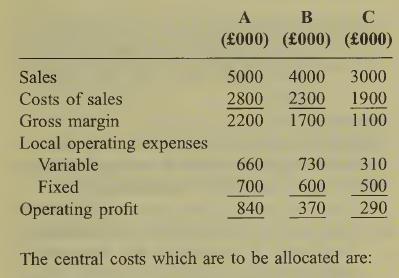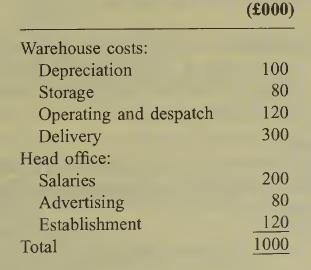Advanced: Profitability analysis using ABC as traditional cost allocation bases ABC pic, a group operating retail stores,
Question:
Advanced: Profitability analysis using ABC as traditional cost allocation bases ABC pic, a group operating retail stores, is compil¬ ing its budget statements for the next year. In this exercise revenues and costs at each store A, B and C are predicted. Additionally, all central costs of warehousing and a head office are allocated across the three stores in order to arrive at a total cost and net profit of each store operation.
In earlier years the central costs were allocated in total based on the total sales value of each store. But as a result of dissatisfaction expressed by some store managers alternative methods are to be eval¬ uated.
The predicted results before any re-allocation of central costs are as follows:

The management accountant has carried out discussions with staff at all locations in order to identify more suitable ‘cost drivers’ of some of the central costs. So far the following has been revealed.

1. An analysis of senior management time revealed that 10% of their time was devoted to warehouse issues with the remainder shared equally between the three stores.
2. It was agreed that the only basis on which to allocate the advertising costs was sales revenue.
3. Establishment costs were mainly occupancy costs of senior management.
This analysis has been carried out against a back¬ ground of developments in the company, for exam¬ ple, automated warehousing and greater integration with suppliers.
Required:
(a) As the management accountant prepare a report for the management of the group which:
(i) Computes the budgeted net profit of each store based on the sales value allocation base originally adopted and explains ‘cost driver’, ‘volume’ and ‘complexity’ issues in relation to cost allocation commenting on the possible implications of the dissatisfaction expressed. (6 marks)
(ii) Computes the budgeted net profit of each store using the additional informa¬ tion provided, discusses the extent to which an improvement has been achieved in the information on the costs and profitability of running the stores and comments on the results.
(11 marks)
(b) Explain briefly how regression analysis and coefficient of determination (r2) could be used in confirming the delivery mileage allocation method used in
(a) above.
Step by Step Answer:






